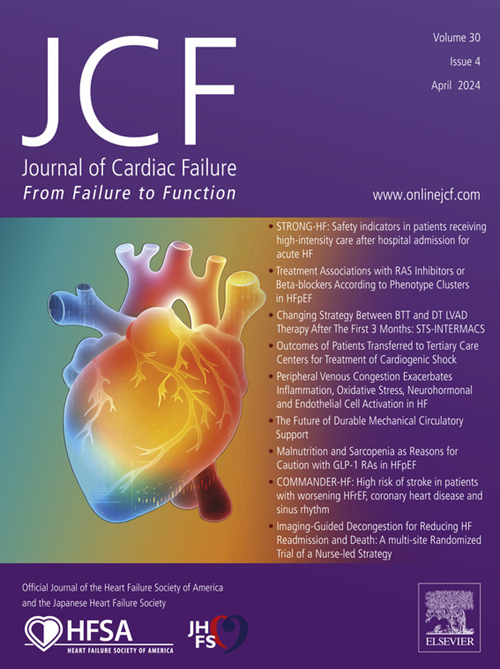Reassessing the need for primary prevention implantable cardioverter-defibrillators in contemporary patients with heart failure
IF 8.2
2区 医学
Q1 CARDIAC & CARDIOVASCULAR SYSTEMS
引用次数: 0
Abstract
The main function of the implantable cardioverter-defibrillator (ICD) is to protect against sudden cardiac death (SCD) due to ventricular tachyarrhythmia (VTA). Current guidelines provide a recommendation to implant a prophylactic ICD for the primary prevention of SCD in individuals having heart failure with reduced ejection fraction (HFrEF) who never experienced a previous sustained VTA. However, these recommendations are based on clinical trials conducted more than 20 years ago and may not be applicable to contemporary patients with HFrEF who have a lower arrhythmic risk as a result of advances in heart failure medical therapies. Thus, there is an unmet need for more appropriate selection of contemporary patients with HFrEF for a primary prevention ICD. In this article, we review data underlying the current clinical equipoise on the need for routine implantation of a primary prevention ICD in patients with HFrEF and the rationale for conducting clinical trials that aim to reassess the role of the ICD in this population.
重新评估当代心力衰竭患者对一级预防植入式心律转复除颤器的需求。
植入式心律转复除颤器(ICD)的主要功能是防止室性心动过速(VTA)引起的心源性猝死(SCD)。目前的指南建议在没有经历过持续性室性心动过速的心力衰竭伴射血分数降低(HFrEF)患者中植入预防性ICD,作为SCD的一级预防。然而,这些建议是基于20多年前进行的临床试验,可能不适用于由于心力衰竭医学治疗的进步而心律失常风险较低的当代HFrEF患者。因此,需要更适当地选择当代HFrEF患者进行一级预防ICD。在这篇文章中,我们回顾了当前关于HFrEF患者需要常规植入一级预防ICD的临床平衡的数据,以及进行旨在重新评估ICD在该人群中的作用的临床试验的基本原理。
本文章由计算机程序翻译,如有差异,请以英文原文为准。
求助全文
约1分钟内获得全文
求助全文
来源期刊

Journal of Cardiac Failure
医学-心血管系统
CiteScore
7.80
自引率
8.30%
发文量
653
审稿时长
21 days
期刊介绍:
Journal of Cardiac Failure publishes original, peer-reviewed communications of scientific excellence and review articles on clinical research, basic human studies, animal studies, and bench research with potential clinical applications to heart failure - pathogenesis, etiology, epidemiology, pathophysiological mechanisms, assessment, prevention, and treatment.
 求助内容:
求助内容: 应助结果提醒方式:
应助结果提醒方式:


